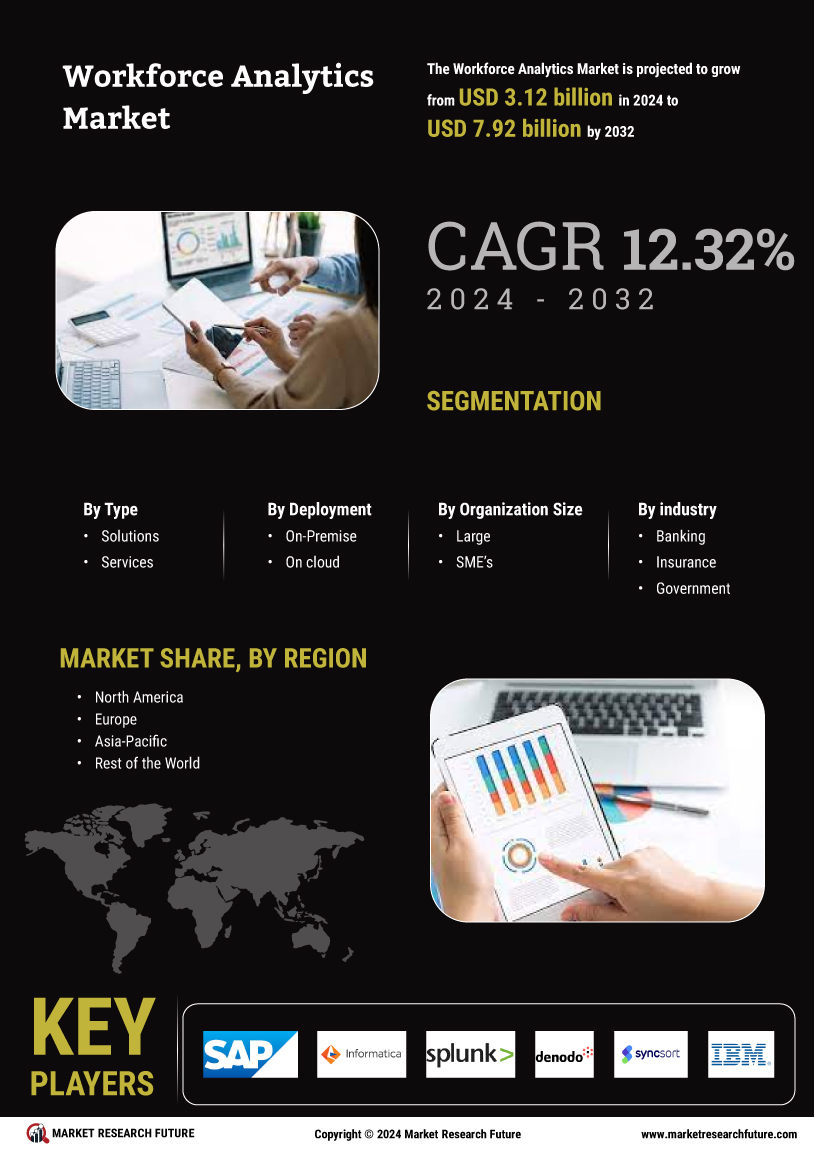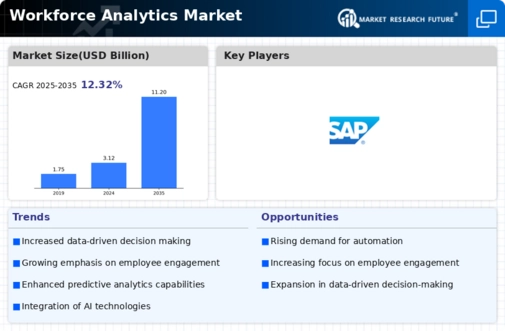Market Growth Projections
The Global Workforce Analytics Market Industry is projected to experience substantial growth over the coming years. With an anticipated market value of 3.12 USD Billion in 2024, the industry is set to expand significantly, reaching an estimated 11.2 USD Billion by 2035. This growth trajectory suggests a compound annual growth rate of 12.34% from 2025 to 2035, indicating a robust demand for workforce analytics solutions. The increasing recognition of the importance of data-driven decision-making in human resource management is likely to propel this growth, as organizations seek to leverage analytics for improved workforce performance and strategic alignment.
Regulatory Compliance and Risk Management
The Global Workforce Analytics Market Industry is shaped by the need for regulatory compliance and effective risk management. Organizations are increasingly required to adhere to various labor laws and regulations, necessitating the use of analytics to monitor compliance and mitigate risks. Workforce analytics provides insights into employee behavior, helping organizations identify potential compliance issues before they escalate. This proactive approach not only safeguards against legal repercussions but also enhances organizational reputation. As companies prioritize compliance and risk management, the demand for workforce analytics solutions is expected to rise, further driving market growth.
Focus on Employee Experience and Retention
The Global Workforce Analytics Market Industry is increasingly focused on enhancing employee experience and retention. Organizations recognize that a positive work environment contributes to higher productivity and lower turnover rates. By utilizing workforce analytics, companies can identify factors that influence employee satisfaction and engagement. This data-driven approach allows for tailored strategies that address employee needs, ultimately fostering a culture of retention. As organizations invest in understanding their workforce dynamics, the market is projected to grow at a CAGR of 12.34% from 2025 to 2035, indicating a sustained commitment to improving employee experiences through analytics.
Technological Advancements in Analytics Tools
The Global Workforce Analytics Market Industry is significantly influenced by rapid technological advancements in analytics tools. Innovations in artificial intelligence, machine learning, and big data analytics are enabling organizations to process vast amounts of workforce data efficiently. These technologies facilitate predictive analytics, allowing companies to forecast workforce needs and identify potential issues before they arise. As a result, the market is expected to grow to 11.2 USD Billion by 2035, reflecting the increasing reliance on sophisticated analytics tools to drive workforce strategies. This evolution in technology not only enhances data accuracy but also empowers HR professionals to make informed decisions.
Increased Demand for Data-Driven Decision Making
The Global Workforce Analytics Market Industry experiences heightened demand for data-driven decision making as organizations seek to enhance operational efficiency. Companies are increasingly leveraging analytics to optimize workforce performance, reduce turnover, and improve employee engagement. This trend is underscored by the projected market value of 3.12 USD Billion in 2024, indicating a robust interest in harnessing data for strategic human resource management. Organizations that utilize workforce analytics report improved decision-making capabilities, which can lead to better alignment of talent with business objectives, ultimately driving profitability and growth.
Integration of Workforce Analytics with Business Strategy
The Global Workforce Analytics Market Industry is witnessing a trend towards the integration of workforce analytics with broader business strategies. Organizations are beginning to understand that workforce data is a critical component of overall business performance. By aligning workforce analytics with strategic objectives, companies can ensure that their human resources are effectively contributing to business goals. This alignment is likely to enhance overall organizational performance and drive competitive advantage. As businesses increasingly recognize the value of data in shaping strategic decisions, the workforce analytics market is poised for continued growth.











